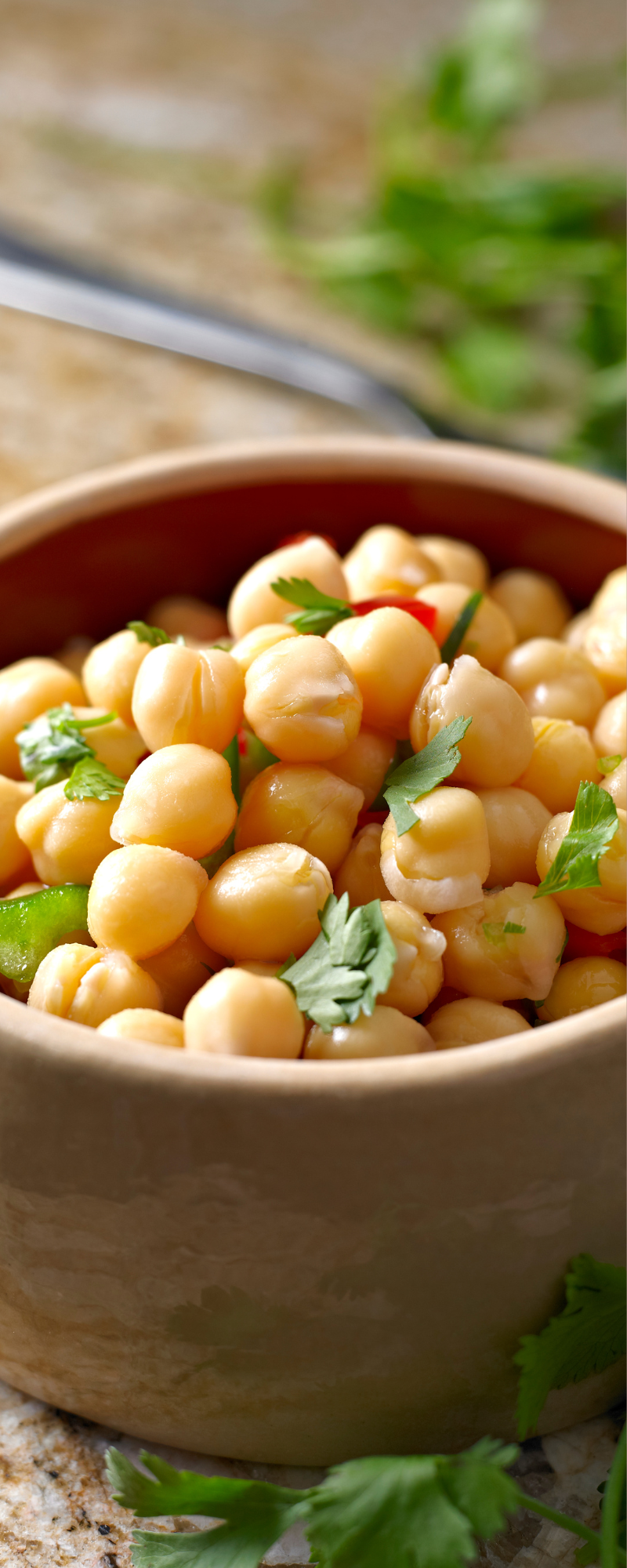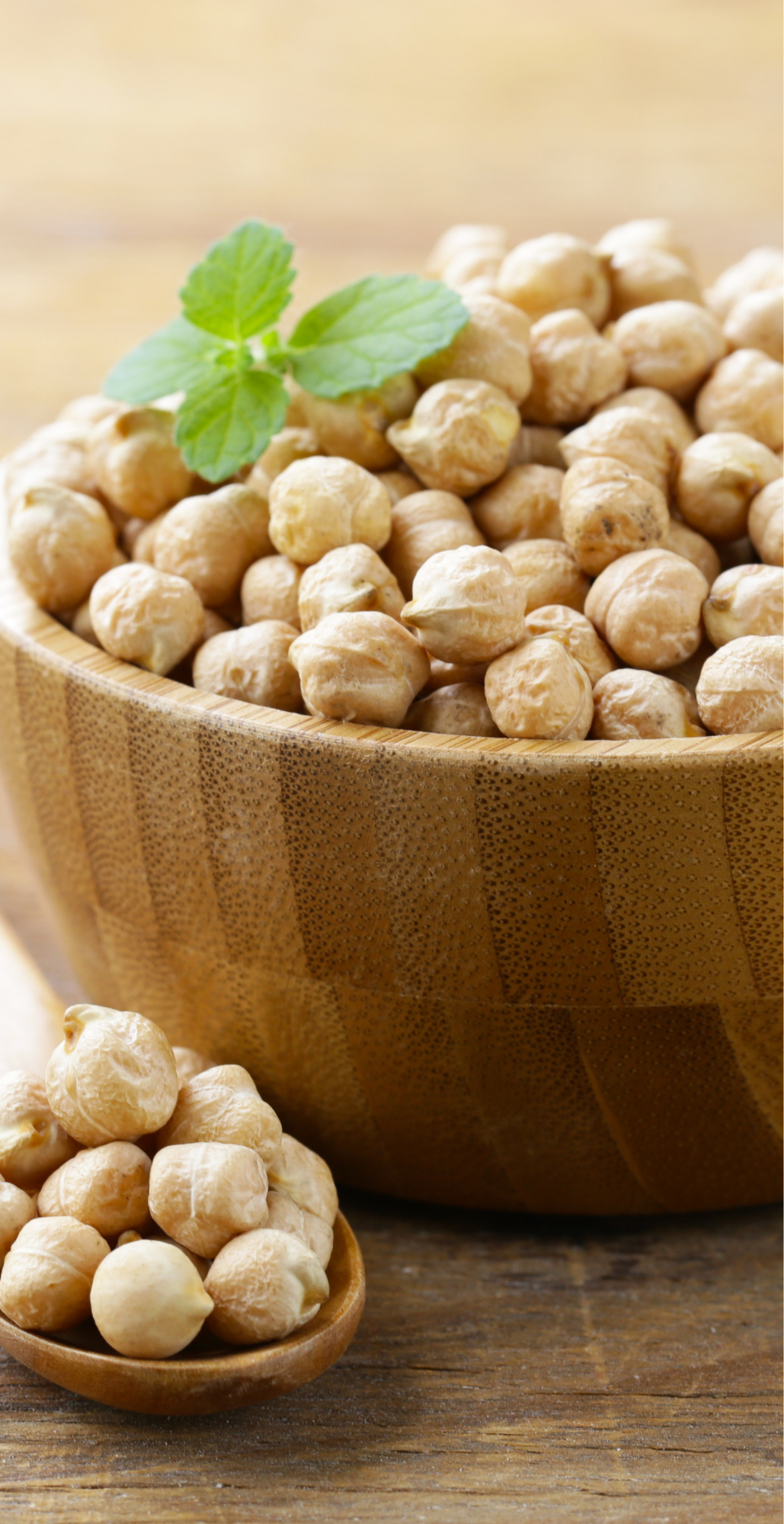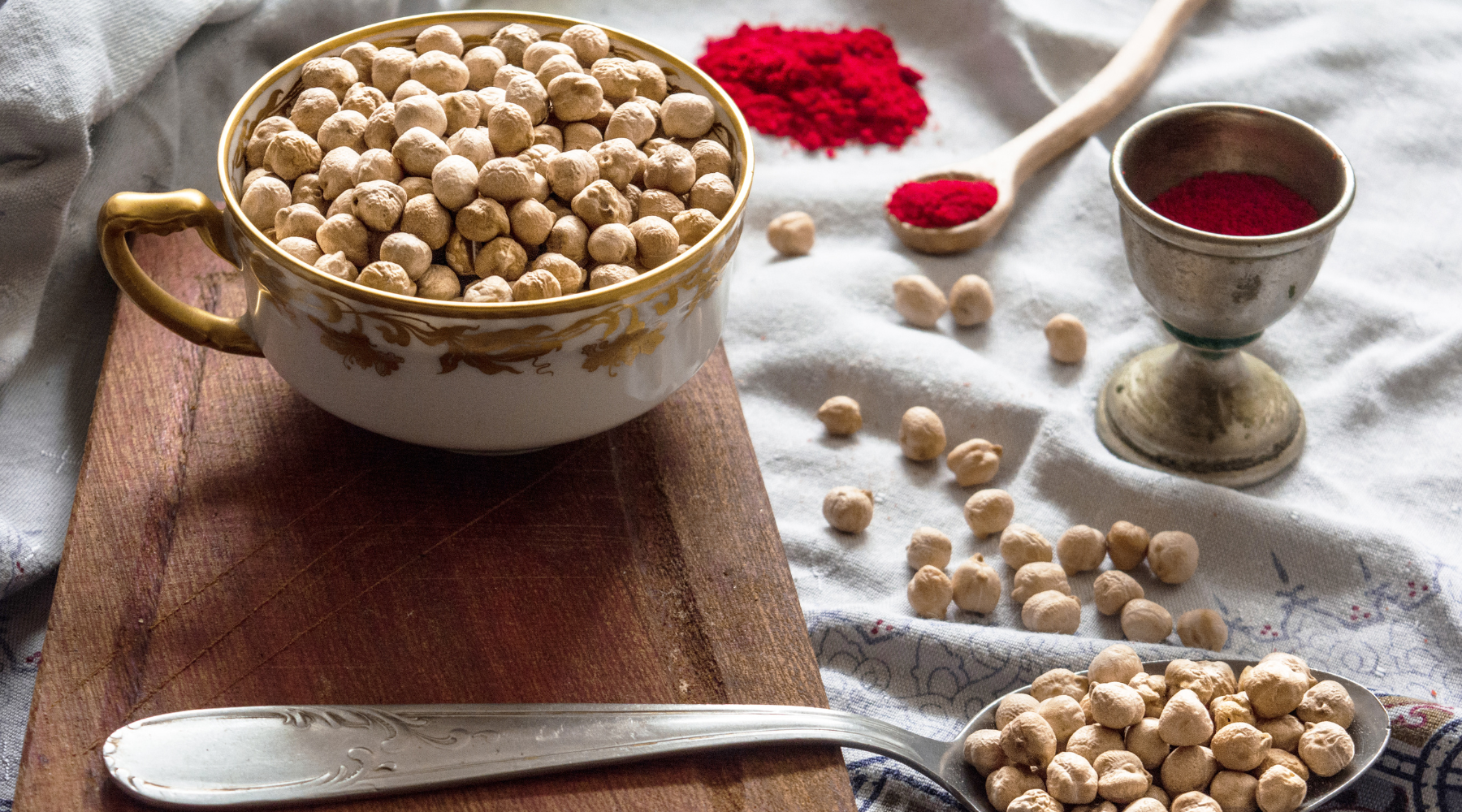Chickpeas, also known as garbanzo beans, are among the oldest cultivated legumes, with a rich history spanning thousands of years across various cuisines worldwide.
Not only are they versatile and delicious, but they also pack a hefty nutritional punch, making them a staple in many diets. And if you're following a vegan or plant-based diet, we're sure you would agree that they are indeed versatile, golden nutritional powerhouses!
In this in-depth guide, we will explore the health benefits, nutritional content, and culinary versatility of chickpeas while addressing common questions such as their suitability for ketogenic diets and methods for cooking raw chickpeas.
Are Chickpeas Healthy?
Absolutely!
Chickpeas are considered a superfood for several reasons. They are rich in protein, fiber, vitamins, and minerals, making them an excellent addition to a balanced diet.
Incorporating chickpeas into your meals can contribute to improved heart health, digestion, weight management, and overall well-being.
Chickpeas Health Benefits
The consumption of chickpeas has been associated with numerous health benefits, including:
Heart Health
Chickpeas are rich in soluble fiber, which can help lower cholesterol levels and reduce the risk of heart disease.
Blood Sugar Control
The combination of fiber and protein in chickpeas helps regulate blood sugar levels, making them a suitable option for individuals with diabetes or those aiming to stabilize their glucose levels.
Weight Management
The high fiber and protein content of chickpeas contribute to increased feelings of fullness and satiety, which can aid in weight management and control.
Digestive Health
The fiber in chickpeas supports a healthy digestive system by promoting regular bowel movements and preventing constipation.
-v1707737851105.png?900x2000)

Chickpeas Nutrition
Let's delve into the nutritional profile of chickpeas:
Protein
Chickpeas are a fantastic plant-based source of protein, with about 15 grams of protein per cooked cup. This makes them a valuable option for vegetarians and vegans looking to meet their protein needs.
Fiber
A single cup of cooked chickpeas contains approximately 12 grams of dietary fiber. Fiber is crucial for digestive health, promoting regular bowel movements, and reducing the risk of conditions like constipation and diverticulitis.
Vitamins and Minerals
Chickpeas boast an array of essential vitamins and minerals, including folate, iron, magnesium, potassium, and vitamin K. These nutrients play vital roles in various bodily functions, such as energy production, immune support, and bone health.
Are Chickpeas Carbs or Protein?
Chickpeas contain more carbohydrates than protein. Approximately 2/3 of the calories in chickpeas come from carbohydrates, while the remaining 1/3 comes from protein.
Still, they are renowned for their high protein content. This makes them an excellent option for individuals seeking plant-based protein sources while still incorporating healthy carbohydrates into their diets.
Are Chickpeas A Complete Protein?
Chickpeas are not considered a complete protein. A complete protein contains all nine essential amino acids the body cannot produce and must obtain from food sources.
However, chickpeas can contribute to a complete protein profile when combined with complementary protein sources, such as whole grains, nuts, and seeds.
For example, pairing chickpeas with whole grains like rice or quinoa creates a complete protein meal, as the grains provide the amino acids lacking in chickpeas.
Are Chickpeas A Low or High-GI Food?
Chickpeas are generally considered a low- to moderate-glycemic index (GI) food. The glycemic index measures how quickly carbohydrates in a particular food raise blood sugar levels compared to pure glucose, which has a GI value of 100.
The GI of chickpeas can vary depending on factors such as the cooking method and the presence of other foods in a meal. Generally, boiled chickpeas have a lower GI range, 28 to 42, than canned or processed chickpeas, as processing can increase the glycemic response.
This means they cause a gradual increase in blood sugar levels and provide sustained energy release, making them a suitable option for individuals aiming to manage blood sugar levels or maintain steady energy throughout the day.
Are Chickpeas Keto Friendly?
While chickpeas are undeniably nutritious, they are not typically considered suitable for a ketogenic diet due to their relatively high carbohydrate content.
The ketogenic diet emphasizes low-carb, high-fat foods to induce a state of ketosis, where the body burns fat for fuel instead of carbohydrates.
Given that chickpeas contain a moderate amount of carbohydrates, they may not align with the strict carb restrictions of a ketogenic eating plan.
Do Chickpeas Cause Gas?
Like many legumes, chickpeas contain certain complex carbohydrates that can be challenging for some individuals to digest fully. This may result in gas or bloating, particularly for those with sensitive digestive systems or certain gut conditions.
However, you can take steps to minimize gas production, such as soaking dried chickpeas before cooking them, incorporating them gradually into your diet, and opting for canned chickpeas, which tend to be more easily digestible.
Read more: The easiest beans to digest, making you less gassy and bloated


How to Cook Raw Chickpeas
Cooking raw chickpeas is a straightforward process that can be customized to suit your preferences. Here are the steps for cooking dried chickpeas:
1. Soaking
Rinse the dried chickpeas under cold water and remove any debris. Place them in a large bowl and cover with water. Allow them to soak for at least 8 hours or overnight. Soaking helps soften the chickpeas and reduces cooking time.
2. Draining and Rinsing
After soaking, drain the chickpeas and rinse them thoroughly under cold water.
3. Cooking
Transfer the soaked chickpeas to a large pot and cover them with fresh water. Bring the water to a boil, then reduce the heat to a simmer. Cook the chickpeas for 1 to 1.5 hours, or until tender. To enhance the flavor, you can add aromatics such as garlic, onion, or bay leaves.
4. Draining and Storing
Once the chickpeas are cooked to your desired consistency, drain them and rinse them with cold water to stop the cooking process. You can store cooked chickpeas in an airtight container in the refrigerator for up to one week or freeze them for longer-term storage.
10 Ways To Enjoy Chickpeas
Chickpeas are incredibly versatile and can be used in various ways to create delicious and nutritious meals. Here are some ideas:
1. Hummus
Blend cooked chickpeas with tahini, garlic, lemon juice, and olive oil to make creamy hummus. Enjoy it as a dip with vegetables or pita bread, or use it as a spread in sandwiches and wraps. Try this delicious beetroot hummus!
2. Salads
Add chickpeas to salads for an extra boost of protein and fiber. They pair well with leafy greens, tomatoes, cucumbers, bell peppers, feta cheese, and a simple vinaigrette dressing. We love this roasted chickpea and kale salad with tahini sauce!
3. Curries and Stews
Incorporate chickpeas into your favorite curry or stew recipes. They absorb the flavors of the spices and provide a hearty texture. Try chickpea curry with coconut milk, tomatoes, onions, and curry spices, served over rice or quinoa.
4. Roasted Snack
Toss cooked chickpeas with olive oil and your favorite seasonings, then roast them in the oven until crispy. Enjoy them as a crunchy snack or sprinkle them over salads and sandwiches for added texture. Try this teriyaki chickpea avo toast!
5. Soups
Add chickpeas to soups and stews to enhance their nutritional content and create a satisfying meal. They work well in vegetable soups, minestrone, and Moroccan-inspired tagines.
6. Burgers and Patties
Mash cooked chickpeas with herbs, spices, and breadcrumbs to make vegetarian burgers or patties. Serve them on buns with your favorite toppings or enjoy them over salads.
7. Stir-fries
Stir-fry chickpeas with vegetables and tofu or tempeh for a quick and nutritious meal. Add soy sauce, ginger, garlic, and sesame oil for flavor, and serve over rice or noodles.
8. Grain Bowls
Build nourishing grain bowls with cooked chickpeas, whole grains (such as quinoa, brown rice, or farro), roasted vegetables, avocado, and a drizzle of tahini or yogurt sauce. You'll love this fresh peanut sattay grain bowl!
9. Chickpea Flour
Use chickpea flour (also known as gram flour or besan) to make gluten-free baked goods like pancakes, crepes, and flatbreads. It can also be used as a thickener in sauces and soups. Buy chickpea flour here
10. Desserts
Believe it or not, chickpeas can be used in sweet treats like chocolate chickpea cookies or chickpea blondies. Puree cooked chickpeas with dates, cocoa powder, and nut butter for a healthier dessert option.





